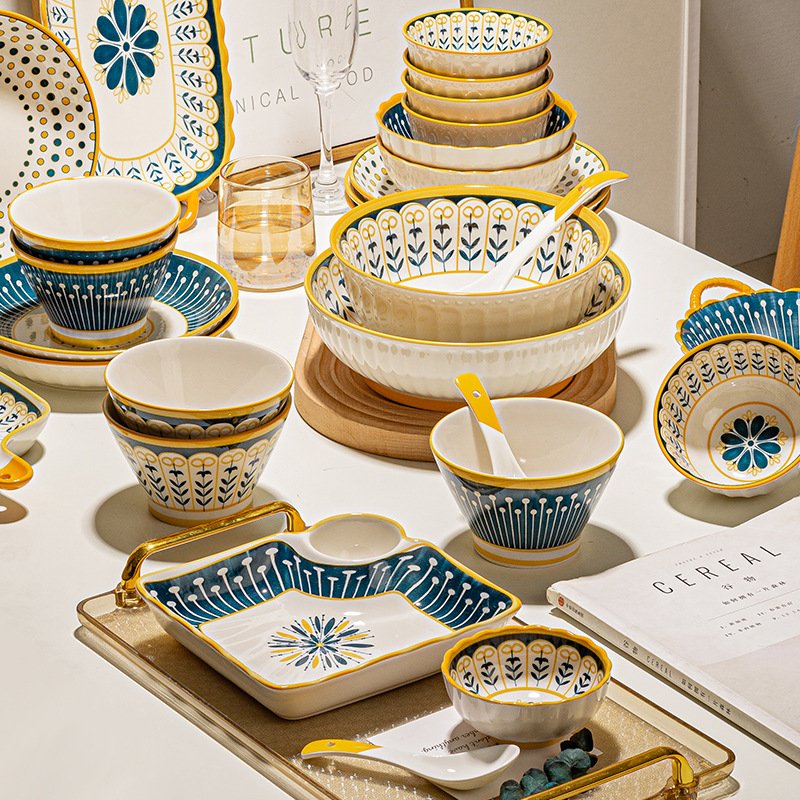I. Definition and Process
Overglaze Decoration refers to a ceramic technique where colored designs are painted onto a pre-fired glazed (usually white or monochrome) surface, followed by a secondary low-temperature firing (600–900°C) to fix the pigments[^2][^5][^8].
- Key Steps:
- Primary High-Temperature Firing (bisque firing) → Creates a smooth glazed base.
- Painting on Glaze (using pigments containing metal oxides).
- Low-Temperature Secondary Firing → Pigments melt and adhere to the glaze surface[^2][^5][^8].
- Comparison with Underglaze Decoration: Underglaze designs are painted on raw clay, covered with glaze, and fired once at high temperatures, embedding the patterns under the glaze. Overglaze designs sit atop the glaze layer[^6][^7].
II. Key Characteristics
- Vivid Color Expression
- Pigments allow for rich color blending, enabling intricate designs (e.g., gradient effects in famille rose or the 3D texture of enamelware)[^2][^3][^7].
- Slightly raised texture, perceptible to the touch[^3].
- Durability Concerns
- Advantages: Low-temperature firing simplifies production, reduces costs, and suits mass-produced tableware[^3][^8].
- Drawbacks:
- Pigments are prone to wear, fading, or discoloration (due to friction or acidic exposure)[^3][^6].
- Low-quality pigments may leach lead or cadmium, especially in children’s tableware[^5][^6].
III. History and Classification
- Evolution:
- Early examples appeared in the Northern Qi Dynasty (550–577 CE) with white-and-green designs[^3].
- Song-Yuan era Cizhou kilns refined red-and-green (honglücai) techniques, laying the foundation for Ming Wucai and Qing Famille Rose[^3][^4].
- Qing Dynasty enamel (falangcai) and famille rose (fencai) elevated overglaze art to its peak[^3][^7].
- Common Types:TypeCharacteristicsRepresentative ExamplesWucaiBold outlines, high-contrast colorsMing Wanli WucaiFamille RoseSoft gradients with “glass white” baseQing Yongzheng Famille RoseEnamelOpaque, oil-paint-like texturesQianlong Enamel European Figure BowlsModern OverglazeSynthetic pigments, stable colorsContemporary tableware
IV. Purchasing and Usage Guidelines
- Safety First:
- Opt for underglaze or mid-glaze tableware (especially for children)[^6][^7].
- For overglaze products, verify lead/cadmium migration test reports and avoid contact with acidic foods[^5][^6].
- Identification Tips:
- Texture: Overglaze designs feel slightly raised; fingertips may detect roughness[^3].
- Luster: Pigmented areas reflect light more intensely; fading may occur over time[^7].
- Magnification: Minor cracks or pigment pooling may appear at edges[^6].
